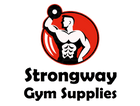Keeping Barbells Rust-Free and Clean: Home Gym Maintenance Tips
Rust is an enemy to barbells, affecting both their appearance and functionality. Despite seeming minor at first, rusting can compromise the performance and safety of your gym equipment over time. The presence of rust on barbells can lead to inefficiencies in workouts and poses risks of injury, making it essential to address this issue promptly.
Understanding how rust forms is key. Moisture exposure and poor storage conditions are primary culprits. The common areas affected include the knurling and sleeves, where sweat and humidity are easily trapped. Proper care and preventative steps can make a significant difference in maintaining your barbells in top shape.
Keeping your barbells rust-free involves a combination of preventive measures and consistent maintenance. From ensuring optimal storage conditions to applying appropriate protective coatings, these steps can prolong the lifespan of your equipment. By adopting effective cleaning and care practices, you can ensure your barbells continue to provide safe and efficient performance, supporting your fitness goals.
Understanding Rust and Its Impact on Barbells
Rust forms on barbells primarily due to exposure to moisture and air, leading to a chemical reaction known as oxidation. This process often begins when droplets of sweat or condensation accumulate on the metal surface and are left unchecked. Over time, this causes iron in the steel to react with oxygen, forming iron oxide, which we know as rust.
Rust affects barbells by compromising their grip and strength, leading to safety hazards during heavy lifts. Rusty barbells might not hold weights securely, increasing the risk of equipment failure. This can hinder workout performance as rust affects the bar’s smoothness, making it more difficult to handle.
Common areas where rust forms include the knurling, which is the textured part of the bar offering grip. Rust can settle into these grooves where moisture lingers, accelerating deterioration. The sleeves, where weight plates are loaded, are also prone to rust that can hamper the rotation of the weights during dynamic lifts. Understanding these vulnerable spots helps in taking preventive measures to keep your barbells in pristine condition.
Prevention Techniques to Keep Barbells Rust-Free
Preventing rust on barbells involves several tactics. Proper storage conditions are crucial. Keep your barbells in a dry, well-ventilated area to minimise exposure to moisture. If your gym environment tends to be humid, consider using a dehumidifier to keep the air dry. A barbell rack not only organises your space but also keeps the bars off the floor, reducing exposure to dampness.
Investing in protective coatings can extend the life of your barbells. Options include oil coatings or specialised rust-resistant treatments. These coatings form a barrier against moisture, effectively shielding the metal from rust.
Regular checks and maintenance form another important prevention pillar. Schedule routine inspections to identify early signs of rust. Wipe down your barbells after each use, especially after sweaty workouts, to remove moisture. Applying a light coat of oil periodically can maintain the protective barrier, acting as regular upkeep to prevent rust.
By combining these prevention methods, you secure a rust-free environment for your barbells, ensuring they remain safe and reliable for your strength training sessions.
Cleaning Methods to Restore Barbells
Dealing with minor rust on barbells is manageable with the right approach. Start by gathering the necessary tools: a wire brush, some cleaning paste (like baking soda mixed with water), a soft cloth, and a rust remover. Begin by using the wire brush to gently scrub the rusted areas, ensuring you do not apply excessive force to avoid damaging the bar’s surface.
Once loose rust is brushed away, apply the cleaning paste to the affected areas and scrub again gently. This will help in lifting any remaining rust particles. Rinse the bar thoroughly with water and dry it completely using a soft cloth. If rust persists, apply a rust remover following the manufacturer’s instructions for a deeper clean.
After cleaning, maintaining a polished finish is essential. Consider applying a light coat of oil to prevent future rust formation. This step not only enhances the barbell's appearance but also adds a protective layer against moisture. Regular cleaning and oiling will help keep your barbells looking new and performing efficiently.
Long-Term Care and Maintenance Strategies
Implementing a regular maintenance routine is vital for keeping barbells in top condition for years. Schedule routine inspections to check for signs of rust or damage, addressing them immediately before they become severe. Regular oiling should be part of your routine, maintaining the protective coating against moisture.
For handling severe rust and damage, it might be necessary to use professional services or consider replacement if the integrity is compromised. Severe rust can weaken the structure, making it unsafe for heavy lifting. Always prioritise safety when evaluating the extent of rust damage.
Creating a maintenance-friendly workspace is key. Ensure your gym area is dry, with ample ventilation to reduce moisture buildup. Invest in racks and storage solutions that keep barbells off the ground and neatly organised. By fostering a clean and tidy environment, you minimise the risk of rust formation, extending the lifespan of your equipment.
Conclusion
Effectively managing rust on your barbells involves understanding its causes and implementing preventative measures. With diligent cleaning and maintenance routines, your barbells can remain in excellent condition, providing safe and reliable performance. Regular care not only enhances equipment longevity but also supports your fitness journey with minimal interruptions.
Discover how Strongway Gym Supplies can support your fitness goals. We offer high-quality equipment and accessories designed to enhance and maintain your gym setup effectively. Explore our range today and ensure your workout environment is both efficient and long-lasting.

